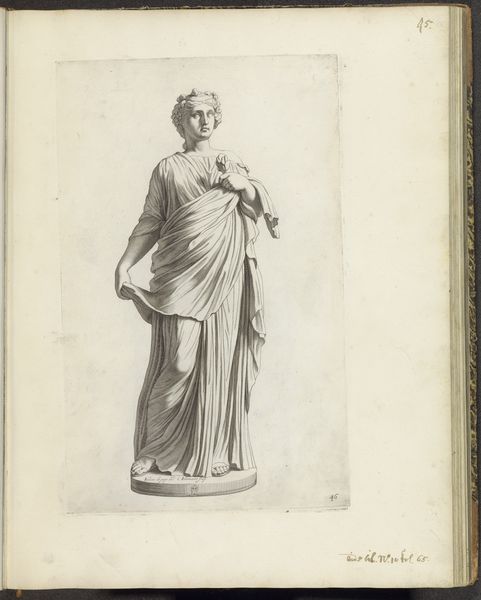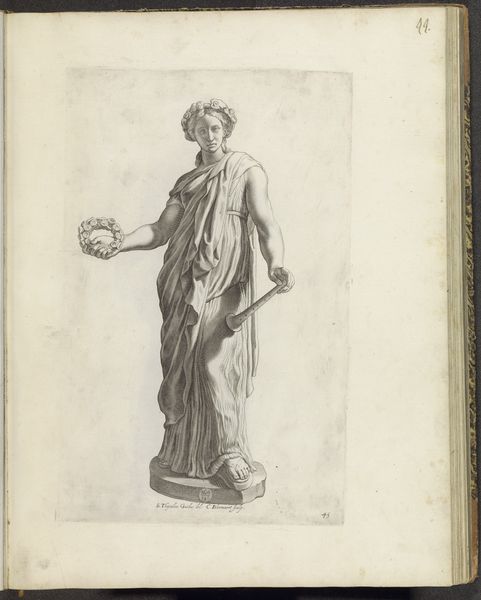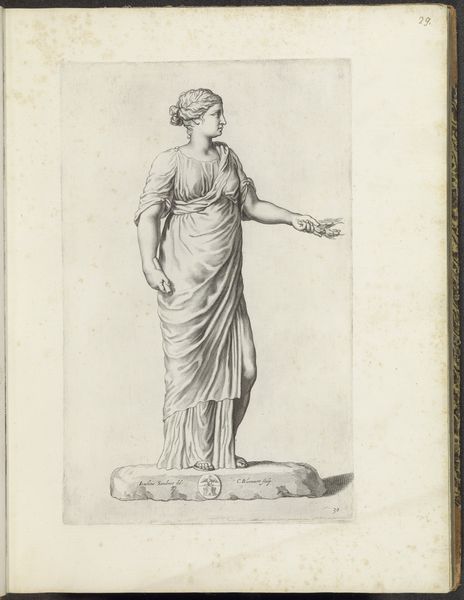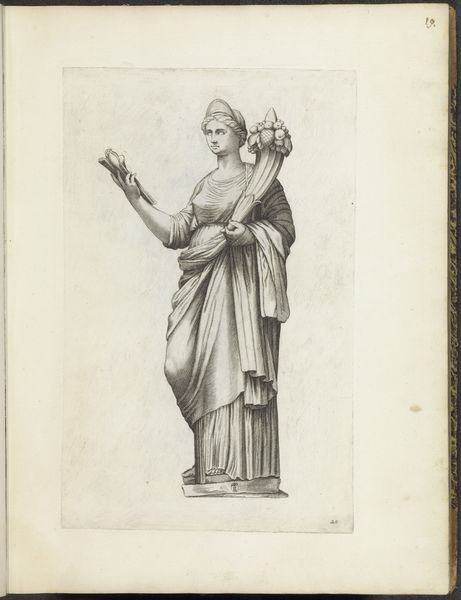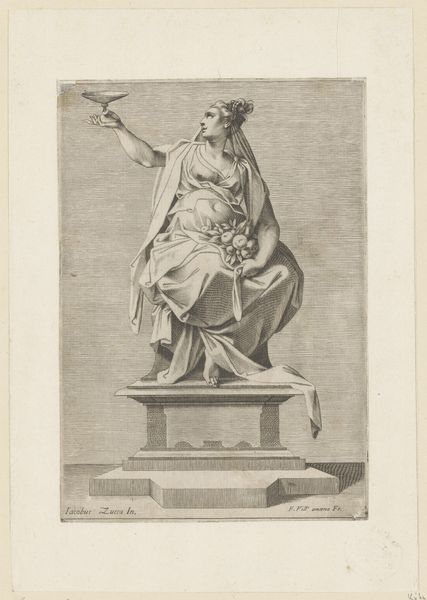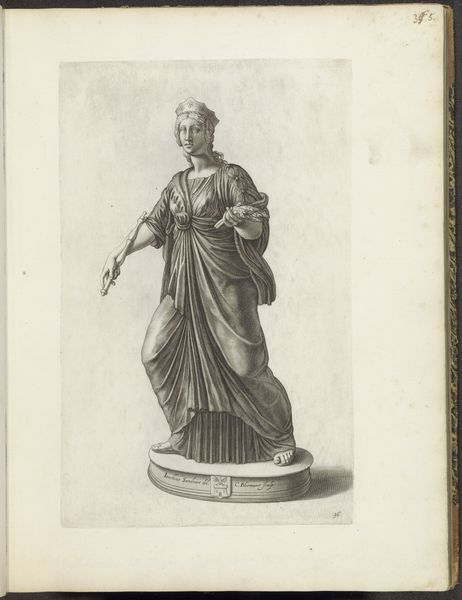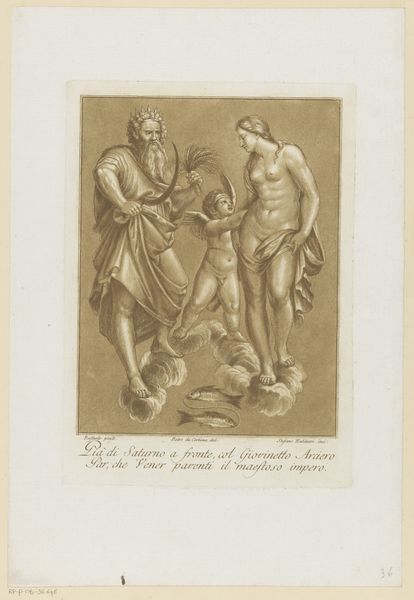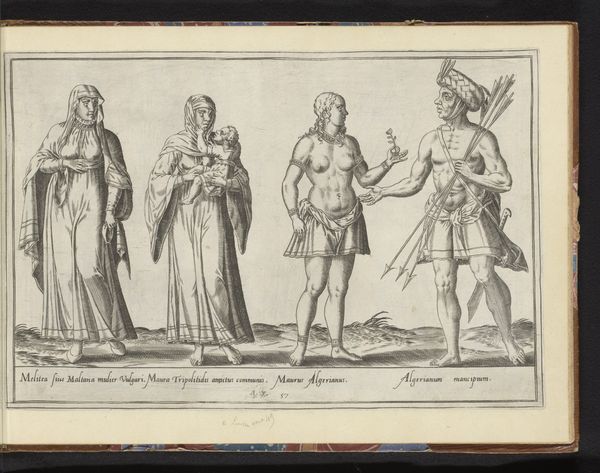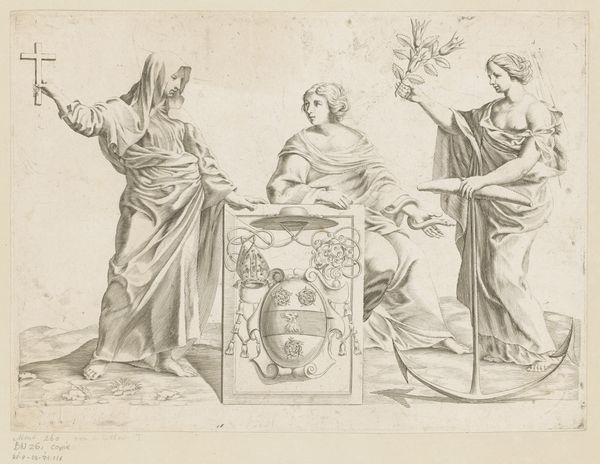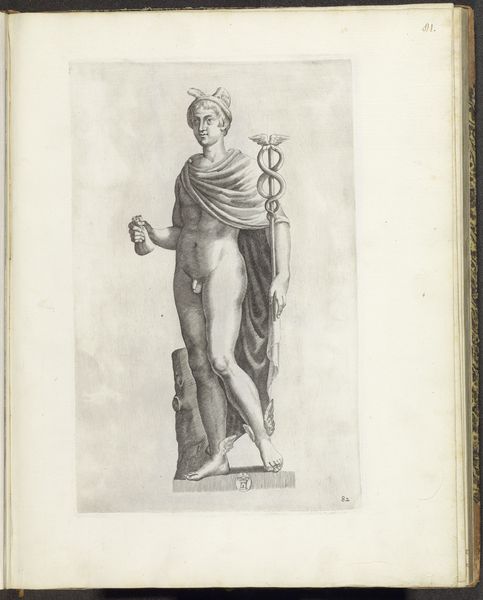
drawing, paper, engraving
#
drawing
#
neoclacissism
#
classical-realism
#
figuration
#
paper
#
history-painting
#
engraving
Dimensions: height 329 mm, width 510 mm
Copyright: Rijks Museum: Open Domain
Curator: This engraving, made by Reinier Vinkeles in 1774, depicts sculptures for the Amsterdam theater, now held in the Rijksmuseum. It's an intriguing blend of figuration and history painting rendered with classical-realist style. Editor: My initial impression is one of staged serenity. The figures feel deliberately posed, like actors waiting for their cue. The monochromatic palette amplifies the almost austere mood. Curator: It's rendered on paper, an important consideration. As an engraving, it allowed for the mass production and distribution of neoclassical imagery—making high art accessible and influencing popular taste through reproducible media. Editor: Absolutely. Looking at the composition itself, I am drawn to the two central portrait medallions framed by Melpomene and Thalia— tragedy and comedy— the muses creating balance. How much can this formal symmetry inform our viewing? Curator: Symmetry was crucial within neoclassical aesthetics, and indeed the work speaks to 18th-century artistic patronage— the social function of art serving to not only celebrate art and the artist, but in a way to define public moral as the enlightenment developed, shifting away from strict monarchical control. Editor: Yes, these two sculpted muses, though still idealised and static, also imply an emerging, shifting theatrical role—the social meaning attached to these figures becomes just as significant as the artistic skill demonstrated within these columns. Curator: And yet, we should not dismiss that artistry. The fine lines created through engraving, that level of craftsmanship, gave a tactile presence, inviting viewers to analyze form and understand proportion. Editor: Agreed, these visual cues and precise construction create and convey cultural value. Perhaps that precision itself communicates that this style itself possesses unique worth and virtue. It certainly has afforded me much insight! Curator: Indeed. This image showcases Vinkeles’ ability to translate sculpture into a graphic language, echoing classical ideals through accessible prints.
Comments
No comments
Be the first to comment and join the conversation on the ultimate creative platform.

